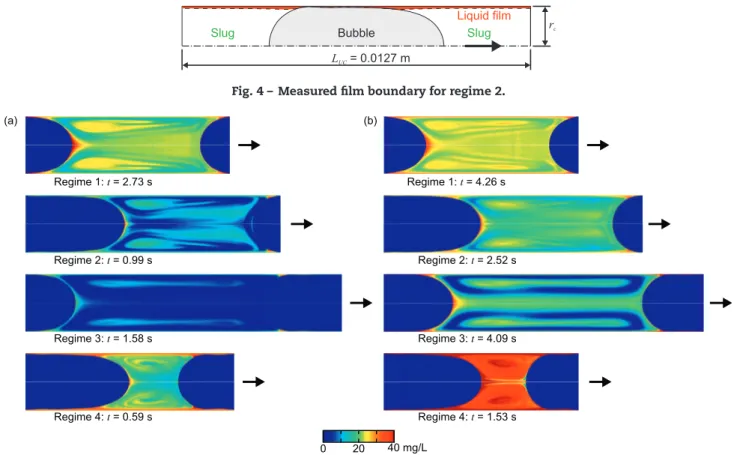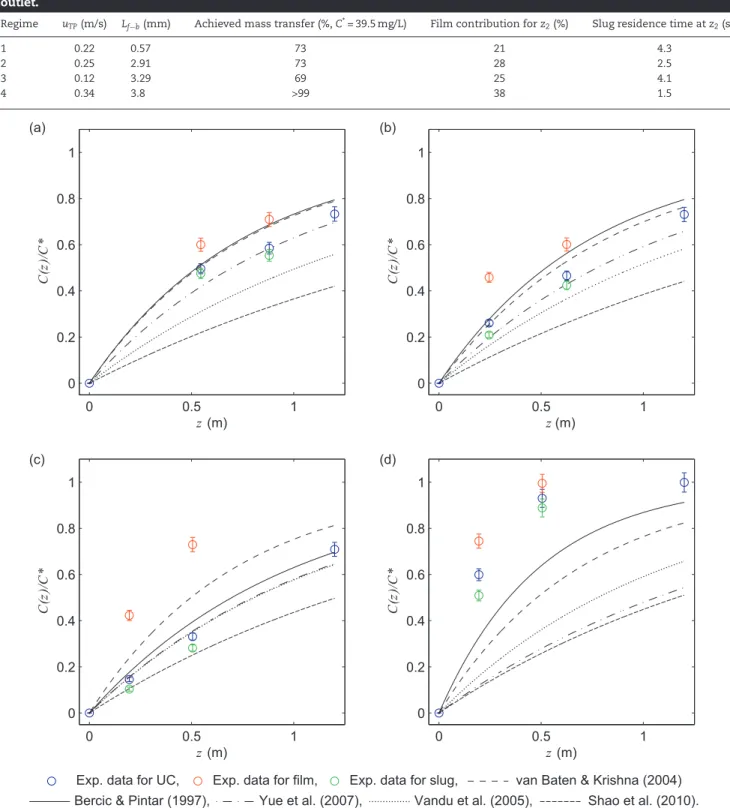Modelling of mass transfer in Taylor flow: investigation with the PLIF-I technique
Texte intégral
Figure



![Fig. 3 – PLIF-I images of recorded regime 2 (see Table 3) at z = 0.245 m (t = 0.99 s): (a) instantaneous gray value image; (b) corresponding instantaneous [O 2 ] image; (c)](https://thumb-eu.123doks.com/thumbv2/123doknet/3149247.89689/7.892.72.433.129.586/plif-images-recorded-regime-table-instantaneous-corresponding-instantaneous.webp)
Documents relatifs
[r]
The limited values of Tafel slopes measured at low overpotential (LO) for the small particle based electrodes suggest the electrodesorption (Heyrowsky step (4)) as the limiting
The heat-juice model was proved to predict average cooking losses in various types of beef meat pieces and different types of cooking conditions.. Local water content inside the
pathogens (bacteria and viruses) use TJs as receptors to attach to the cell membrane in order to become internal- ized, or they disrupt the TJ first before penetrating into the
Application (Section 3.2) Given the title of a requested document, we select several ex- cerpts from the candidate vectors returned by the search procedure (1b) to create a
What is necessary is that ideas should be propagated in India where Ûley may have an impact on Ûlose who have Ûle knowledge and Ûle power to change Ûle social
The WINdow Diagnostic Expert Knowledge System (WINDEKS) is a classical knowledge based diagnosis system for identifying perceived problems with windows and suggesting..
A couple of algorithmic procedures for the estimation of ridges from the modulus of the (continuous) wavelet transform of one-dimensional signals are described, together with a



